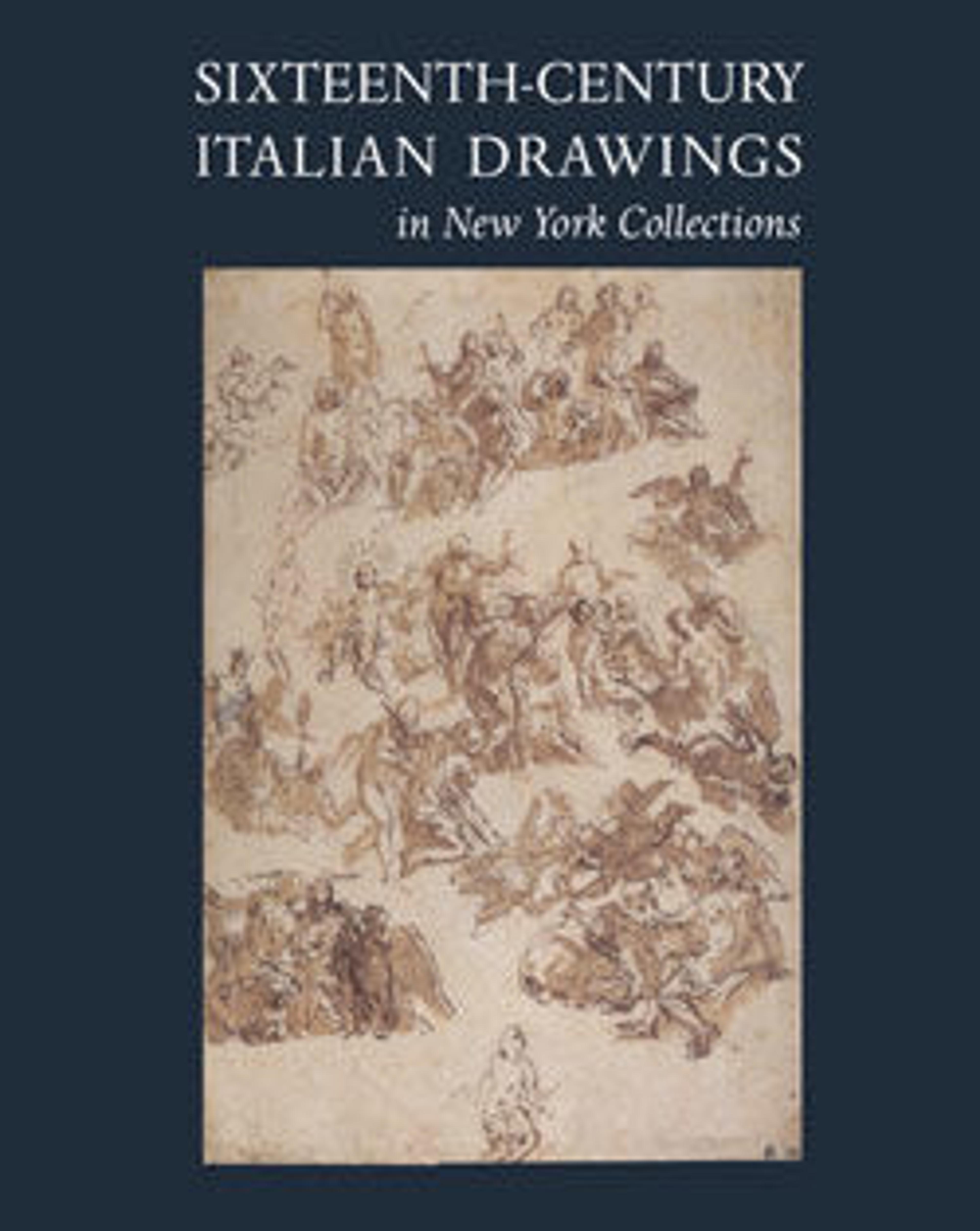Design for a "Quarantore" Decoration
This carefully drawn scale model provides a design for a liturgical practice that came to be widely celebrated in the late sixteenth century. As shown here, the Eucharist was placed in a small sepulcher where it remained, and was worshiped, for the same forty hours that Christ's body lay in the tomb prior to the Resurrection. Federico has added another level of significance by alluding to the moment of the Transfiguration, when the apostles saw Christ conversing with the Old Testament prophets Elijah and Moses-seen here in the guise of statues-and the voice of God the Father spoke from a cloud, identifying Christ as his "beloved son." This tableau, particularly the illumination and fictive clouds of the celestial realm, anticipates the elaborate theatrical "machines" that would mark the Devotion of the Forty Hours in the seventeenth century.
This detailed presentation drawing offers a design for a temporary structure erected for a devotion of "Quarent' Ore" (Forty Hours). The host was continuously adored for forty hours, reflecting the time between Christ's death and his Resurrection. As seen in the drawing, the host lay in a casket or sarcophagus placed on a temporary structure in a side altar or chapel. Probably originiating in Milan, this liturgical practice became common during the second half of the sixteenth century as a formal plea for intercession in times of danger or calamity. It is still practiced, though with changes, in the Roman Catholic Church today.
This detailed presentation drawing offers a design for a temporary structure erected for a devotion of "Quarent' Ore" (Forty Hours). The host was continuously adored for forty hours, reflecting the time between Christ's death and his Resurrection. As seen in the drawing, the host lay in a casket or sarcophagus placed on a temporary structure in a side altar or chapel. Probably originiating in Milan, this liturgical practice became common during the second half of the sixteenth century as a formal plea for intercession in times of danger or calamity. It is still practiced, though with changes, in the Roman Catholic Church today.
Artwork Details
- Title:Design for a "Quarantore" Decoration
- Artist:Federico Zuccaro (Zuccari) (Italian, Sant'Angelo in Vado 1540/42–1609 Ancona)
- Date:1540–1609
- Medium:Pen and brown ink, brush and brown wash, highlighted with white, over traces of black chalk
- Dimensions:15-5/16 x 11-1/4 in. (38.9 x 28.5 cm)
- Classification:Drawings
- Credit Line:Purchase, Lord Palumbo, David T. Schiff, Drue Heinz and W. Mark Brady Gifts, in memory of Jacob Bean, and Harry G. Sperling Fund, 1993
- Object Number:1993.120
- Curatorial Department: Drawings and Prints
More Artwork
Research Resources
The Met provides unparalleled resources for research and welcomes an international community of students and scholars. The Met's Open Access API is where creators and researchers can connect to the The Met collection. Open Access data and public domain images are available for unrestricted commercial and noncommercial use without permission or fee.
To request images under copyright and other restrictions, please use this Image Request form.
Feedback
We continue to research and examine historical and cultural context for objects in The Met collection. If you have comments or questions about this object record, please contact us using the form below. The Museum looks forward to receiving your comments.
